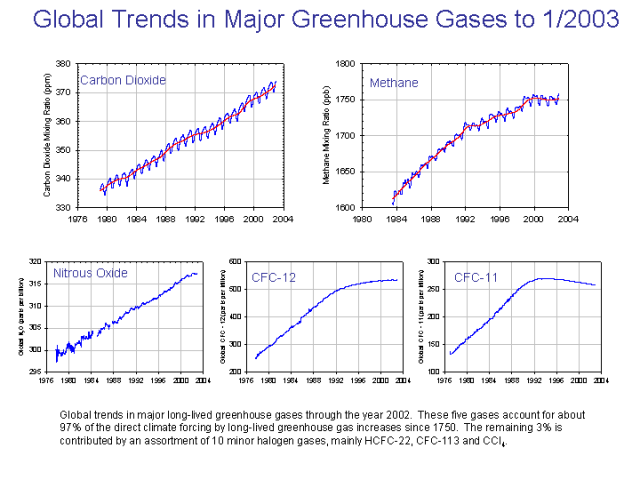Enhanced Greenhouse Effect
As you learned earlier, Earth’s greenhouse effect is a natural phenomenon. It is beneficial because it traps heat and keeps Earth from getting too cold. It is caused by gases called greenhouse gases, which re-emit infrared radiation down to Earth, warming it in the process. Example greenhouse gases are water vapor, carbon dioxide, some CFCs, ozone, and methane. Of these, water vapor is the most common in the atmosphere. The others, however, are becoming more prevalent because of human activity. Carbon dioxide is especially rising because it is produced by combustion of fossil fuels, which people all over the world rely on for energy.
Human activity is leading to an enhanced greenhouse effect. In a perfect world, the amount of heat that greenhouse gases absorb is balanced by the amount of heat that leaves Earth’s surface. This would keep Earth’s temperatures fairly steady. But an excess of greenhouse gases can raise the temperatures of the planet because more greenhouse gases mean more heat from the Sun is absorbed. This is exactly what happens during an enhanced greenhouse effect.

The graph shows you the concentrations of greenhouse gases in the atmosphere. Notice how CFCs have recently decreased because of the Montreal Protocol, an international agreement to ban the use of these chemicals. However, carbon dioxide and nitrous oxide are increasing as a result of fossil fuel combustion and no widespread agreements have called for a reduction in fossil fuel use.